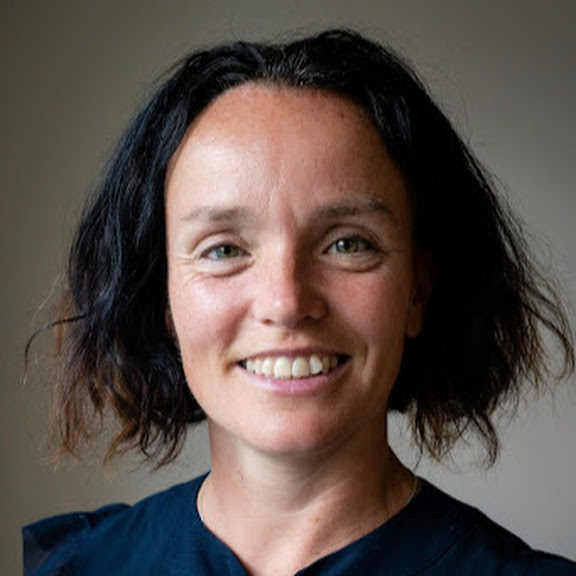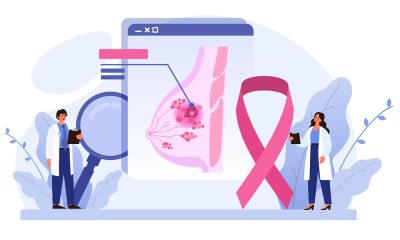Diagnosis
International consortium launches US$1m AI grant to tackle ovarian cancer

An international group of ovarian cancer research charities has launched a new AI-focused grant aimed at accelerating progress in one of the most underfunded and least survivable cancers affecting women worldwide.
The Global Ovarian Cancer Research Consortium — a collaboration between organisations in the US, UK, Canada and Australia — has announced a US$1m AI Accelerator Grant to support research into ovarian cancer, alongside US$1m in computing credits from Microsoft’s AI for Good Lab.
Each year, approximately 324,000 women globally are diagnosed with ovarian cancer, and 207,000 die from the disease. Despite ongoing efforts, survival rates have improved little over the past decades. The consortium’s grant aims to stimulate innovation using artificial intelligence to improve detection, diagnosis and treatment outcomes.
The consortium includes Ovarian Cancer Research Alliance (US), Ovarian Cancer Action (UK), Ovarian Cancer Canada, and the Ovarian Cancer Research Foundation (Australia). It was established in 2024 to coordinate international efforts and pool resources in an effort to drive faster progress.
“For far too long, survival rates have barely budged, and women around the world continue to face devastating odds,” said Audra Moran, president and CEO of Ovarian Cancer Research Alliance (OCRA). “We cannot afford to wait another decade for meaningful progress. At OCRA, we believe that artificial intelligence could hold the key to accelerating the breakthroughs we so desperately need — from earlier detection to better treatment options — which is why we envisioned a grant of this global magnitude and scope specifically for AI.”
The grant will require research teams to include members from all four participating countries. Successful applicants will receive Azure cloud computing resources through Microsoft’s AI for Good Lab, intended to scale the impact of their research.
“New discoveries are needed to find lifesaving treatments for ovarian cancer, a cancer that tragically still has a low survival rate,” said Juan Lavista Ferres, chief data scientist and director of Microsoft’s AI for Good Lab. “Equipping leading researchers around the globe with powerful AI tools and computing resources will help accelerate their critical work, hopefully leading to breakthroughs that save women’s lives.”
Global projections suggest that by 2050, diagnoses of ovarian cancer will rise by over 55%, with an estimated 503,448 women affected annually. Deaths are expected to reach 350,956 per year. While AI is already being applied across a range of cancers, its potential impact in ovarian cancer remains underexplored.
See more about the grant programme here : https://ocrahope.org/research/information-for-researchers/grant-programs/
Hormonal health
The rise of preventive gynaecology: What women need to know

Co-written By Dr Claire Gillvray and Tarang Majmudar, Welbeck Cambridge (2026)
Gynaecological cancers, cervical, ovarian, uterine, vaginal, and vulvar, pose a significant health risk across all age groups.
While treatment has advanced in recent years, early detection remains the single most crucial factor in improving survival, reducing the need for invasive treatments, and preserving quality of life.
Why Early Detection Matters
When gynaecological cancers are detected early, the five-year survival rate exceeds 90 per cent.
In contrast, late-stage diagnosis can reduce survival chances by more than half. Early detection truly can mean the difference between life and death.
In England, the introduction of cervical screening in 1998 and HPV vaccination in 2008 has drastically reduced the incidence and mortality associated with cervical cancer.
For endometrial cancer, postmenopausal bleeding is a red flag symptom, prompting timely medical intervention and generally resulting in early diagnosis.
Yet, ovarian and vulval cancers often go unnoticed.
Ovarian cancer’s vague symptoms such as bloating, abdominal discomfort, and appetite changes, are frequently mistaken for benign conditions.
Vulval cancer symptoms like itching or soreness are often overlooked, especially post-menopause.
To improve early detection, a threefold strategy is essential:
- Screening
- Symptom recognition
- Lifestyle modification
1. Screening
Cervical cancer is one of the few gynaecological cancers that is both preventable and detectable through routine screening.
Caused primarily by the human papillomavirus (HPV), cervical cancer rates have dropped significantly due to HPV vaccination and cervical screening programmes.
In 2023, NHS England outlined its goal to eliminate cervical cancer by 2040.
Despite high HPV vaccination coverage (approximately 80 per cent), screening uptake has declined, particularly among younger women, where participation has dropped to 70 per cent.
The upcoming introduction of self-sampling for HPV aims to address this gap and improve participation.
However, no effective population-wide screening methods currently exist for ovarian, uterine, vaginal, or vulvar cancers.
This reality reinforces the importance of self-awareness, recognising symptoms, and attending regular gynaecological check-ups.

Dr Claire Gillvray
2. Recognising Warning Symptoms
Awareness of key symptoms is vital for early diagnosis:
- Cervical cancer: abnormal vaginal bleeding, post-coital bleeding, unusual discharge
- Ovarian cancer: persistent bloating, pelvic discomfort, urinary urgency, loss of appetite, weight loss
- Uterine cancer: postmenopausal bleeding, irregular or heavy periods
- Vaginal cancer: unusual bleeding or discharge
- Vulvar cancer: itching, pain, lumps, or ulceration
Although many of these symptoms can have benign causes, persistence or change from the norm should always prompt medical review.
Historically, women’s gynaecological symptoms have often been minimised or dismissed.
This has led to diagnostic delays for conditions like endometriosis, which still takes nearly 9 years on average to diagnose.
Young women are particularly vulnerable, with symptoms too often attributed to hormonal changes or stress.
Rather than placing blame, we must push for better education, research funding, and structural support to help clinicians, especially in primary care, identify early warning signs across diverse age groups and health backgrounds.
3. Lifestyle and Risk Reduction
Healthy habits can reduce the risk of several gynaecological conditions:
- Maintain a healthy weight
- Eat a balanced, nutrient-rich diet
- Avoid tobacco and limit alcohol
- Get vaccinated for HPV and practice safe sex
- Attend regular health checks
- Manage conditions like diabetes and hypertension
- Seek genetic counselling if there’s a family history of breast, bowel, or gynaecological cancers
Prevention isn’t only about medical care, it’s also about empowering people with the knowledge and tools to take charge of their health.
The Role of Men and Partners in Gynaecological Health
Preventative gynaecology isn’t a “women-only” issue. Men and partners play an essential role in recognising early warning signs, supporting open health conversations, and advocating for equitable care.
Awareness campaigns must include all genders, so that everyone can support informed decisions, challenge stigma, and help normalise seeking help early.
The Rise of FemTech
Preventative gynaecology is being transformed by FemTech with technologies including:
- Menstrual tracking apps
- Wearable hormone monitors
- At-home diagnostics
- AI-powered symptom tools
These innovations give people more insight into their own health and more confidence when seeking care.
Yet, technology alone isn’t enough. It must be paired with systemic changes in how symptoms are recognised and responded to.
Chronic pain, abnormal bleeding, and fatigue are too often normalised, leading to prolonged suffering and delayed diagnoses.
Empowering Through Self-Advocacy

Tarang Majmudar
A central tenet of preventative gynaecology is self-advocacy. This involves:
- Know your normal—cycles, mood, energy, libido
- Use tech to track symptoms and patterns
- Push for answers when something feels “off”
- Recognise that stress, sleep, and environment all play a role in health
Empowerment also means expecting and demanding respectful, informed care. It’s about being heard, not dismissed.
Prevention in Action: Real Progress
We’re already seeing the benefits of preventative measures:
- The HPV vaccine is reducing cervical cancer rates significantly.
- Early hormone therapy during perimenopause can protect bone, brain, and heart health.
- Growing awareness of reproductive conditions is shortening the diagnostic journey for many.
When supported by data and technology, people can have more meaningful conversations with healthcare providers and make informed choices about their bodies and care.
Looking Forward
For individuals:
Use digital tools to track trends and flag changes. Treat this data as a conversation starter, not a diagnosis.
For clinicians:
Engage with new technologies. Ask proactively about menstrual, hormonal, and sexual health.
For innovators:
Design inclusive, accessible tools for all bodies, all ages, all ethnicities.
For policymakers and researchers:
Support funding for research that focuses on earlier detection, better diagnostics, and equitable access to care.
The future of gynaecological care is not just about reacting to disease, it’s about preventing it, detecting it early, and empowering everyone to take control of their health.
Preventative gynaecology is more than a trend, it’s a necessity.
With education, accessible tools, cultural change, and collaborative action, we can make early detection the norm, not the exception.
News
15k breast cancer patients a year could benefit from genome sequencing

Whole genome sequencing could identify unique genetic features to guide treatment for more than 15,000 breast cancer patients each year in the UK, new research suggests.
The technique, which analyses DNA from both patient and tumour to identify genetic changes, helps reveal what drives each cancer and highlights potential treatment targets or resistance.
Scientists at the University of Cambridge used data from almost 2,500 women across England held in the National Genomic Research Library – one of the world’s largest resources of its kind, run by Genomics England.
The data came from the 100,000 Genomes Project and was linked to clinical and mortality records, tracking outcomes over five years.
They found that 27 per cent of breast cancer cases had genetic features that could help guide personalised treatment immediately, either using existing drugs or through clinical trials – equivalent to more than 15,000 women a year in the UK.
Professor Serena Nik-Zainal is from the Department of Genomic Medicine and Early Cancer Institute at the University of Cambridge.
She said: “The UK is a genuine world-leader in its ability to do whole genome sequencing through the NHS Genomic Medicine Service.
“Now that we have population-level evidence of how impactful whole-genome sequencing could be, we have the potential to make a difference to thousands of patients’ lives every year, helping tailor their care more precisely, giving more treatment to those who need it and less to those who don’t.”
Among the key findings were HRD (homology-directed repair deficiency) – a DNA repair issue found in 12 per cent of breast cancers – unique mutations that could be targeted with specific drugs, signs of resistance to hormone therapy, and mutational patterns suggesting weaknesses that treatments could exploit.
An additional 15 per cent of cases had features useful for future research, such as problems in other DNA repair pathways, equating to about 8,300 women a year.
The analysis also offered insights into prognosis. In ER+HER2– breast cancers – the most common subtype, accounting for roughly 70 per cent of diagnoses – researchers found strong genetic indicators of tumour aggressiveness.
Major structural DNA changes, APOBEC mutational signatures (a form of DNA damage) and mutations in the cancer gene TP53 were all linked to higher death risk.
These genetic markers proved more predictive than traditional measures such as age, cancer stage or tumour grade.
Using these results, the researchers developed a framework to help clinicians identify which patients need more aggressive treatment and which could safely have less.
Around 7,500 women a year with low-grade tumours could benefit from more intensive therapy.
Professor Matt Brown, chief scientific officer of Genomics England, said: “This promising research further demonstrates the potential of genomics in improving cancer treatment outcomes for many people.
“Rapid advances in genomics are already ushering in the next generation of personalised cancer medicine. Not only can a patient’s genes guide precision treatment decisions that will best serve them, but we could improve how we match people up to clinical trials and help more patients access innovative treatments.
“Research like this highlights the value of the National Genomic Research Library and how understanding our genes can provide a real boost to the way we diagnose and treat disease.
“It’s all thanks to the contribution of participants and NHS partners in the 100,000 Genomes Project – the consented clinical and genomic data opens the door for incredible research opportunities.”
News
Managers still unprepared to discuss menstrual health, study finds

Few HR professionals believe managers are properly trained to support employees with endometriosis and other menstrual health conditions, new research has revealed.
Only 16 per cent of HR professionals said line managers had the training or resources to effectively support staff with menstrual health issues, according to new research.
That figure dropped to 13 per cent for endometriosis – a disease affecting the lining of the womb, which impacts one in 10 women and those assigned female at birth from puberty to menopause.
The research, carried out by HR software provider Ciphr and the charity Endometriosis UK, surveyed 121 HR professionals and leaders in summer 2025.
It also found that many employers do not provide free period products or have flexible uniform rules.
Julie Burns is the Endometriosis Friendly Employer scheme manager at Endometriosis UK.
She said: “We know that there are many HR professionals already putting in place the right measures to enable those with endometriosis to feel valued, be productive and contribute to their organisation’s success – but as a charity we also hear stories of women and those assigned female at birth treated unfairly or without sympathy, forced to change careers or abandon their ambitions, because of the disease.
“We hope HR professionals recognise that providing support to the estimated 1.5m in the UK with endometriosis is in their interests.
“Doing so will not only enable that community to achieve their potential, but it sends a message to your wider team that they are valued and can expect support and reasonable adjustments.”
Menstrual health policies were far less common among UK employers (11 per cent) than those for mental health (57 per cent) or peri/menopause (48 per cent).
However, flexible working – offered by 89 per cent of employers – may provide some support for employees with endometriosis.
Only 21 per cent of employers recorded data on how many staff had a diagnosed or suspected menstrual health condition such as endometriosis.
Meanwhile, 29 per cent said free period products were not supplied at work, with another 3 per cent unsure.
Among organisations where uniforms are worn, just 18 per cent said employees were asked whether adjustments were needed.
This could be particularly relevant for those with endometriosis, who may experience bloating or heavy bleeding that can temporarily alter body shape by up to two dress sizes.
Claire Hawes, chief people and operations officer at Ciphr, said employers should take the findings seriously.
She said: “It’s concerning that these results reveal such a wide gap in organisational awareness and readiness to support employees living with endometriosis and other menstrual health conditions.
“When managers are perceived as unapproachable or ill-equipped to respond with empathy and understanding, organisations risk sidelining the needs of a significant part of their workforce.
“HR teams have a vital role to play in changing this. Managers must be empowered to support their people holistically – not just in terms of performance and KPIs, but in their health and wellbeing too.
“That means investing in training, implementing flexible policies, signposting resources, and fostering open, compassionate conversations about health.”
Sanchia Alasia is a trustee of Endometriosis UK and senior HR professional who lives with endometriosis.
Alasia said: “My personal and professional experience shows me that a little bit of flexibility can go a really long way.
“Those with endometriosis need to know that if they have a flare-up or need to attend a medical appointment, they can tell a manager and be believed and understood, rather than judged.
“That flexibility needs to be there both in the culture of an organisation and in the policies that line managers rely on.
“Ultimately, line managers need clarity, and all sorts of employees may need that flexibility at some time or another, regardless of whether they have endometriosis, another medical condition, or other circumstances affecting them.”

 Fertility4 days ago
Fertility4 days agoScientists turn human skin cells into eggs in IVF breakthrough

 Hormonal health5 days ago
Hormonal health5 days agoFDA plans to revise black box warning on menopause hormone therapies

 News5 days ago
News5 days agoDaily pill could delay menopause ‘by years,’ study finds

 News4 days ago
News4 days agoMothers’, not fathers’, mental health directly linked to their children’s, study shows

 News3 days ago
News3 days agoManagers still unprepared to discuss menstrual health, study finds

 News1 day ago
News1 day agoAI-powered women’s health companion Nexus launches in UK

 News3 days ago
News3 days agoAncient herb to modern must-have: Why ashwagandha is capturing UK women’s attention

 Insight3 days ago
Insight3 days agoDrug improves survival in triple-negative breast cancer






















